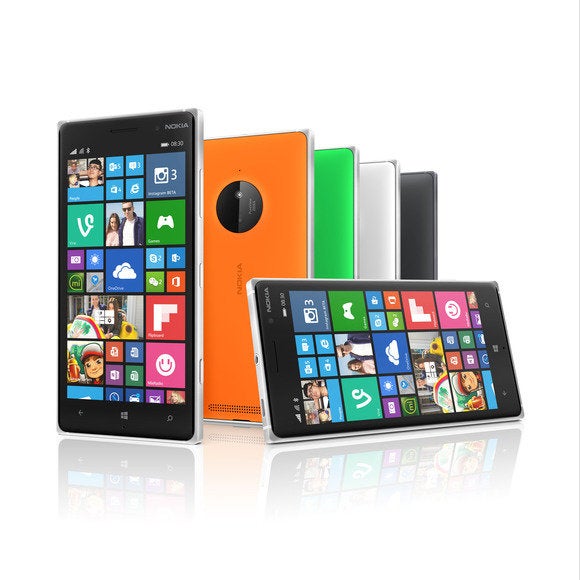Apple did its usual big-bang, glitzy rollout today for the iPhone 6. The new phone may well hurt competing Android devices. But Windows Phone won't feel a thing.
As expected, the iPhone 6 will come in two flavors, the iPhone 6 with a 4.7-inch screen, and the iPhone 6 Plus with a 5.5-inch one. That 5.5-incher looks as if it essentially will be a phablet.
Both phones will be high-end devices, with high resolutions (1334 by 750, with a density of of 326 pixels per inch on the smaller phone and 1920 by 1080 and 401 ppi on the larger one), "ion-strengthened glass," a new generation 64-bit Apple A8 chip, and more.
Because they're both high-end devices, they'll also carry high-end prices. The iPhone 6 will have 16GB, 64GB and 128GB models that will sell for $199, $299 and $399 with two-year contracts. The iPhone 6 Plus will have 16GB, 64GB and 128GB models for $299, $399 and $499 with two-year contracts.
Apple didn't announce prices without contracts, but you can expect them to start at $600 or so, and then go up from there.
And that's why the iPhone 6 won't hurt Windows Phone. Microsoft is going downmarket with Windows Phone, betting that it can attract price-conscious consumers put off by high-priced smartphones. Microsoft calls its recently announced Lumia 830 Windows Phone, which sports a 1.2GHz quad-core Snapdragon 400 processor, 1GB of RAM, 16GB of storage, and a 5-inch screen an "affordable flagship." Its price is $430 without contract.
Chris Weber, corporate vice president of mobile device sales at Microsoft said at the IFA electronics show in Berlin:
"We're going to challenge Apple and Samsung and expose the premium they are charging for a phone."
Prices of the new iPhone can only add fuel to that charge. Of course, it's still not clear that Microsoft's new Windows Phone strategy will work. But the iPhone 6 announcement will play right into it.






